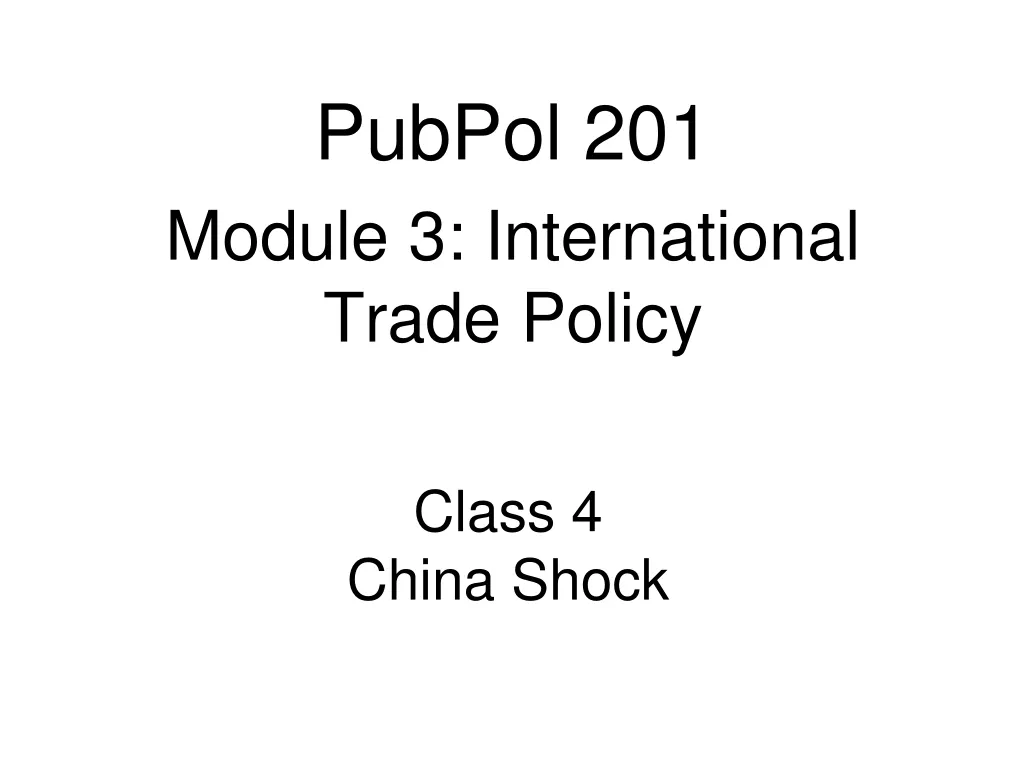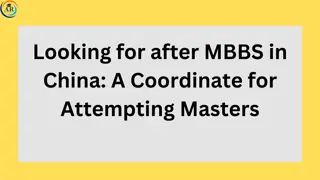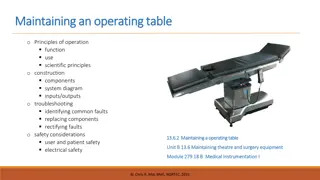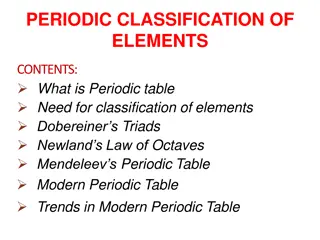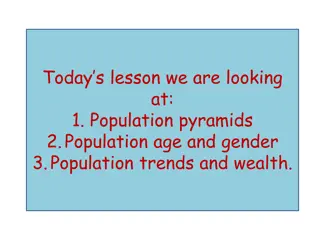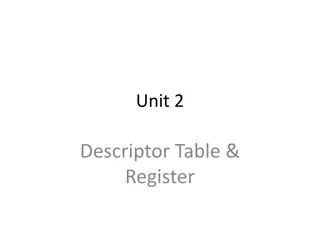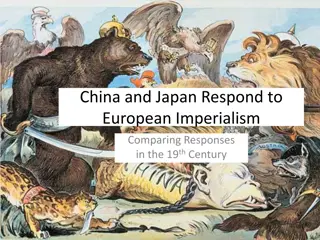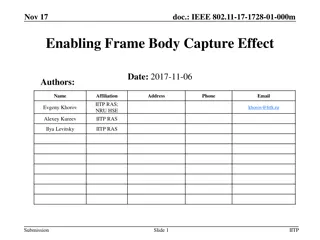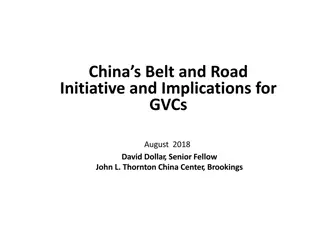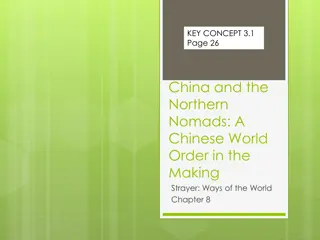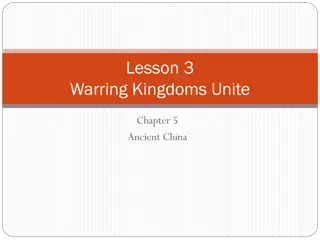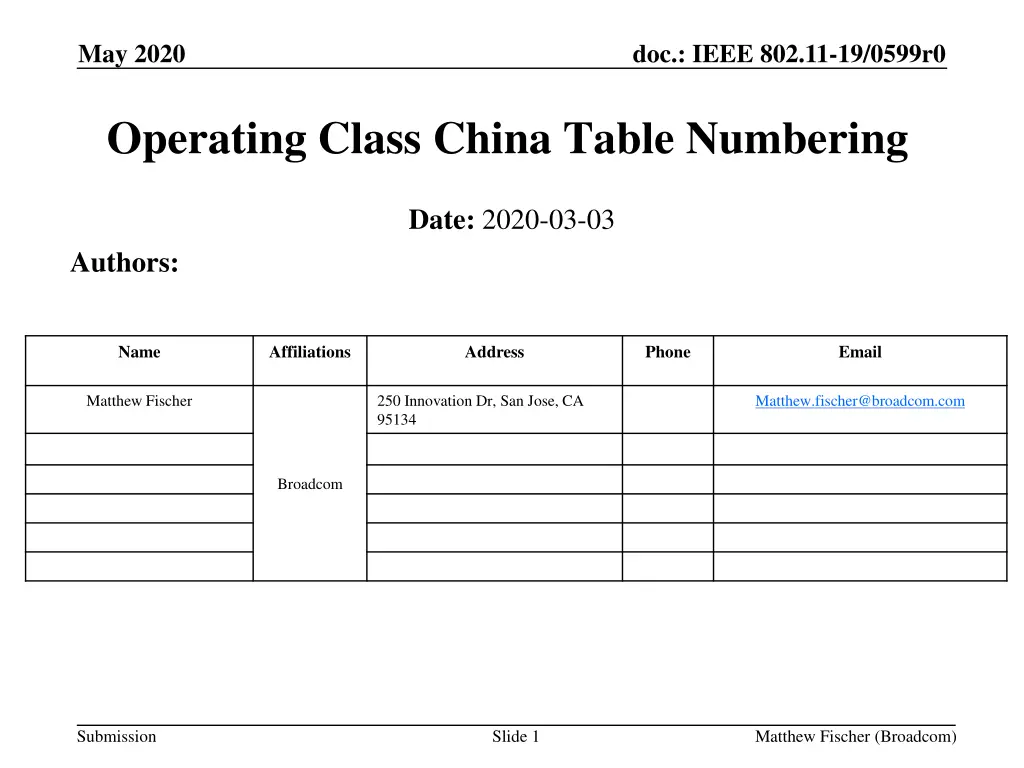
IEEE 802.11-19/0599r0 Operating Class China Table Update
Explore the changes in the IEEE 802.11-19/0599r0 document regarding operating class tables for China, including frequency, channel numbers, and compatibility concerns due to table renumbering. Gain insights into how the tables are encoded and the implications for device operation.
Download Presentation

Please find below an Image/Link to download the presentation.
The content on the website is provided AS IS for your information and personal use only. It may not be sold, licensed, or shared on other websites without obtaining consent from the author. If you encounter any issues during the download, it is possible that the publisher has removed the file from their server.
You are allowed to download the files provided on this website for personal or commercial use, subject to the condition that they are used lawfully. All files are the property of their respective owners.
The content on the website is provided AS IS for your information and personal use only. It may not be sold, licensed, or shared on other websites without obtaining consent from the author.
E N D
Presentation Transcript
May 2020 doc.: IEEE 802.11-19/0599r0 Operating Class China Table Numbering Date: 2020-03-03 Authors: Name Affiliations Address Phone Email Matthew Fischer 250 Innovation Dr, San Jose, CA 95134 Matthew.fischer@broadcom.com Broadcom Submission Slide 1 Matthew Fischer (Broadcom)
May 2020 doc.: IEEE 802.11-19/0599r0 Abstract Annex E includes operating class tables Frequencies, channel numbers, op widths, op limits, class numbers REVmd inserted the S1G table as E-5 And moved China from E-5 to E-6 Table numbers are actually encoded into elements See 9.4.2.8 Country element The change in China table number creates a backwards compatibility problem Submission Slide 2 Matthew Fischer (Broadcom)
May 2020 doc.: IEEE 802.11-19/0599r0 Where Is The Table Encoded? 9.4.2.8 Country element Contains country string dot11CountryString Defined in Annex C Submission Slide 3 Matthew Fischer (Broadcom)
May 2020 doc.: IEEE 802.11-19/0599r0 dot11CountryString If it is a country, the first two octets of this string is the two character country code as described in document ISO 3166-1. The third octet is one of the following: 1. an ASCII space character, if the regulations under which the station is operating encompass all environments for the current frequency band in the country, 2. an ASCII 'O' character, if the regulations under which the station is operating are for an outdoor environment only, or 3. an ASCII 'I' character, if the regulations under which the station is operating are for an indoor environment only. 4. an ASCII 'X' character, if the station is operating under a noncountry entity. The first two octets of the noncountry entity is two ASCII 'XX characters. 5. the hexadecimal representation of the Operating Class table number currently in use, from the set of tables defined in Annex E, e.g., Table E-1 (Operating classes in the United States) is represented as x'01'." Submission Slide 4 Matthew Fischer (Broadcom)
May 2020 doc.: IEEE 802.11-19/0599r0 Example From Annex E NOTE 1 The following example Country element (see Figure 9-162 (Country element format)) describes U.S. operation (55, 53) using both Table E-1 (Operating classes in the United States) class 12 (nonglobal) and Table E-4 (Global operating classes) class 81 (global) for the 2.4 GHz band, 11 channels at 20 dBm limit (in hexadecimal): 07, 0F, 55, 53, 04, C9, 0C, 0, 01, 0B, 14, C9, 51, 0, 01, 0B, 14. Element ID 07 Element Length 0F 2-letter Country Code 55, 53 = U S Table 04 = Global Slide 5 Submission Matthew Fischer (Broadcom)
May 2020 doc.: IEEE 802.11-19/0599r0 Is The Example Correct? There s only one country string value It can name only one Table What if there are two tables in use? E.g. an old table for backwards compatibility, plus the newer global table The example states that both E1 and E4 tables are in use, but only E4 (the new global table) is explicitly called out, because there s only room for one table to be called out in the Country String And that is used for E4 == Global This means that because the country is US, E1 is implied, per the example But what if the country is not US, CN, JP or in the EU? What is the implied table in use? Or is there none? E.g. does CA use the US E1 table? Is there a mapping? Should we define a mapping? Can CA only specify the global table? Submission Slide 6 Matthew Fischer (Broadcom)
May 2020 doc.: IEEE 802.11-19/0599r0 Is Information Missing? Maybe the correct interpretation is: If there is no table listed for a country or region in Annex E, then a table must be named in the Country String: Any one of the tables for: US, JP, CN, EU or Global If there is a table for a country (US, JP, CN, EU member) then that table is implicitly included if another table is listed If the table index is the matching E1, E2, etc, then there is only one table in use I.e. The Global table is not in use If the table index is E4, then the global table is in use, plus the implicit matching country (or region) table Countries not US, JP, CN, EU cannot use two tables E.g. CA can use either E1 or E4, but not both Submission Slide 7 Matthew Fischer (Broadcom)
May 2020 doc.: IEEE 802.11-19/0599r0 Make E4 Implicit? Is there some other way to determine that a STA or BSS supports the global table? E.g. inferred through the observation of some other element or parameter value? If so, then Wouldn t it be better to leave E4 as implicit and explicitly name the non-global table in use? Would that be backwards incompatible? What about EU membership changes? Submission Slide 8 Matthew Fischer (Broadcom)
May 2020 doc.: IEEE 802.11-19/0599r0 Support For The Example 10.22.3 Operation with operating classes When dot11OperatingClassesRequired is true and the STA supports one or more global operating classes, or where global operating classes domain information is present in a STA, the STA shall indicate current operating class information in the Country element and Supported Operating Classes element using the country string for the global operating classes, except that a VHT STA may omit from the Country element any Operating Triplet field for an Operating Class for which the Channel spacing (MHz) column indicates 80 MHz or wider and for which the Behavior limits set column in the applicable table in Annex E contains only a blank entry or either or both of 80+ and UseEirpForVHTTxPowEnv. Submission Slide 9 Matthew Fischer (Broadcom)
May 2020 doc.: IEEE 802.11-19/0599r0 Oh Yes, How About A CID: 4765 Proposed Resolution Revise TGmd editor to make changes shown in 11-20-xxxxry which address Annex E table numbering problems. Commen ter Peter Ecclesine Comment Global classes 115, 116, 118, 119, 125, 126 nonglobal operating classes reference should be to Table E.6 China, not Table E.5 Sub1GHz Proposed Change Correct last nonglobal operating classes references to E.6.1, E.6.4, E.6.2, E.6.5, E.6.3 and E.6.6 respectively. CID Page 4379.00 E Clause 4765 CID 4765 Submission Slide 10 Matthew Fischer (Broadcom)
May 2020 doc.: IEEE 802.11-19/0599r0 Proposed Changes TGmd editor to change Table E-5 S1G operating classes To become: Table E-6 S1G operating classes And change Table E-6 Operating classes in China To become: Table E-5 Operating classes in China Submission Slide 11 Matthew Fischer (Broadcom)
May 2020 doc.: IEEE 802.11-19/0599r0 Straw poll #1 Do you support the proposed changes to the numbering in Draft P802.11REVmd_D3.1 Annex E of Table E-5 S1G operating classes and Table E-6 Operating classes in China as described in 11-19-0599-00-000m- Operating-Class-China-Table-Number Proposed Changes? YES NO ABS Submission Slide 12 Matthew Fischer (Broadcom)
May 2020 doc.: IEEE 802.11-19/0599r0 References [1] Draft P802.11REVmd_D3.1 Submission Slide 13 Matthew Fischer (Broadcom)

